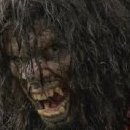This caught my attention, since my topic post w/ graph showed an observable downward trend. Looking back on my data, code, and graph, I discovered I had mistook the date field as the submission date, when in fact what the Kaggle author called 'timestamp' is actually the reported sighting date. I should have caught this. The submission date is not available in the dataset I had used.
The trends that AI pulled from Reddit are based on what the Redditor called an updated dataset relative to the one I used. This updated version has a submission date and a messy sighting year field (e.g., 2022, 2014-ish, 2001-2002, 1987 and 1994, 2011, etc.). The updated version also cuts off at 2021. There are other differences between the datasets, but here's what I found in terms of AI's response:
Yes, there was a spike in 2012, though these were largely Class B sightings. My guess is that this comes from heightened awareness from Finding Bigfoot, which premiered in 2011.
The downward trend resumed its course after the spike in 2012. Yes, there was an upward trend but it reversed around 2005.
Here's my updated graph with correct labeling (LEFT) and a graph I created from the 'updated' data linked by the Redditor (RIGHT). Note that i had fewer records to graph (on the left), as I removed any records missing a date/year value (due to the witness unable to recall the encounter date). The graph on the right, since it's using the actual submission date (rather than the encounter date), had far fewer missing values (roughly 1000 more records to graph). BFRO launched in mid-late 1990s, and this is reflected in the near-zero submissions prior to then (righthand graph).

